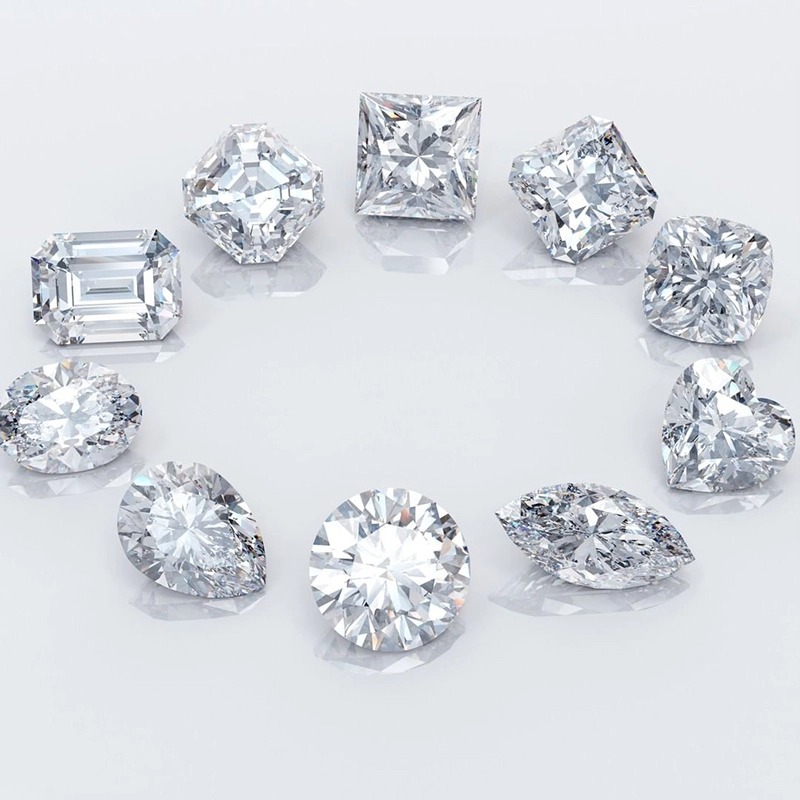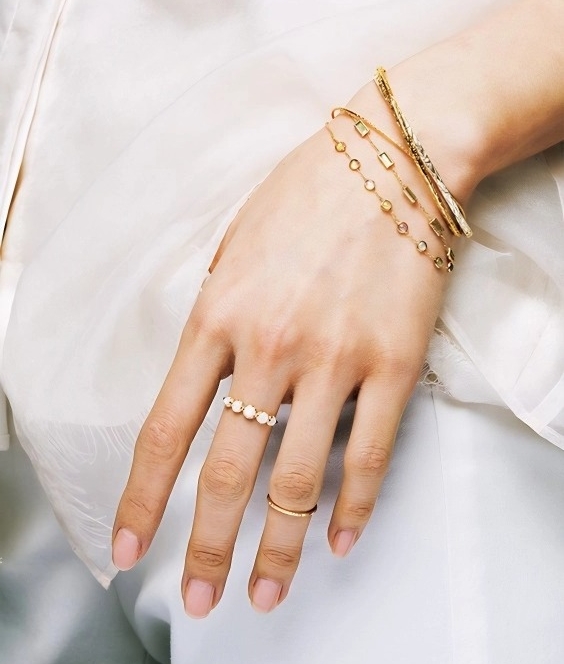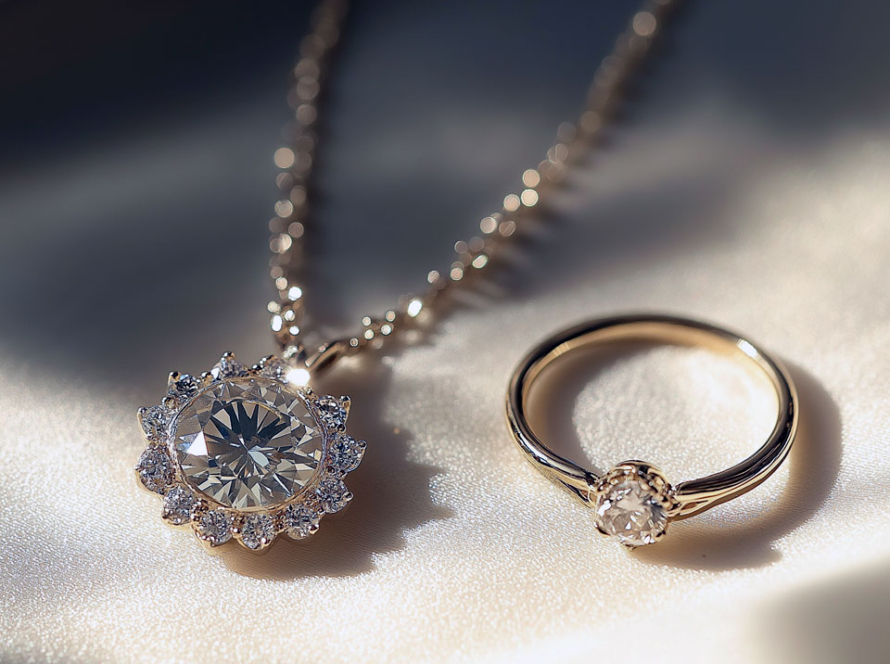Gemstone cutting is the process of transforming rough gemstone material into a specific shape, proportion, and faceted structure through a series of techniques, aiming to maximize its beauty, brilliance, and color.
The Fundamental Purposes of Gemstone Cutting
- Optical Effects: Enhances a gemstone’s brilliance (light reflection), fire (color dispersion), and scintillation (dynamic sparkle) through precise facet angles.
- Weight Retention: Balances cutting precision with preserving the stone’s carat weight to minimize unnecessary material loss.
- Flaw Concealment: Strategically positions facets to hide internal inclusions or fractures, improving apparent clarity.
 Main Types of Gemstone Cuts
Main Types of Gemstone Cuts1. Round Brilliant Cut
The Round Brilliant Cut is the most classic diamond cutting style, featuring 58 facets (including the culet). Its precise geometric proportions (e.g., table percentage, crown angle, pavilion depth) maximize light reflection, delivering exceptional fire and brilliance. With its symmetrical circular shape, this cut combines timeless aesthetics with superior optical performance, making it the most popular and widely used diamond cut in modern jewelry.
2. Princess Cut
The Princess Cut is a square-shaped brilliant-cut diamond, known for its sharp corners, high sparkle, and excellent weight retention. Developed in the 1970s, it blends modern appeal with classic elegance, ranking as the second most popular diamond shape for engagement rings. Its balanced brilliance and cost-efficiency make it ideal for buyers seeking a distinctive yet budget-friendly option.
3. Emerald Cut
The Emerald Cut is a rectangular or square step-cut characterized by its large, open table, cropped corners, and parallel, stair-step facets (typically 48-50). Named after its frequent use in emeralds, this cut emphasizes clarity and color rather than intense sparkle, resulting in a more subdued, elegant glow. Best suited for high-clarity, large-carat diamonds or colored gemstones, it exudes a refined, vintage sophistication.
4. Cushion Cut
The Cushion Cut is a classic diamond shape that blends a soft square with rounded corners, resembling a plush cushion. Featuring 58-64 larger facets, it combines the warm glow of old mine cuts with the fire of modern brilliant cuts, enhancing a gemstone’s color saturation and carat presence. Popular in vintage-inspired jewelry, it is particularly favored for fancy-colored diamonds and larger white diamonds.
5. Oval Cut
The Oval Cut is prized for its elegant elongated silhouette and exceptional brilliance, retaining the sparkle of a round brilliant while creating an illusion of greater size. With 58 facets, it enhances light reflection, making it ideal for colorful gemstones and diamond brilliance. However, proper symmetry is crucial to avoid the “bow-tie effect” (a dark shadow across the center). Versatile in both classic and contemporary designs, it works beautifully as a center stone for rings or pendants.
6. Pear Cut
merges the fire of a round brilliant with the grace of a marquise shape. Its 58 facets deliver dazzling sparkle, while the tapered silhouette elongates fingers or complements facial contours. Symmetry is key to preventing the “bow-tie effect”, and the delicate pointed end often requires protective settings. A timeless choice for engagement rings, pendants, and statement jewelry.
7. Marquise Cut
The Marquise Cut is a boat-shaped gemstone with pointed ends, featuring 56-58 facets for intense brilliance. Its elongated design can make a stone appear 30%-40% larger, flattering finger shapes beautifully. The ideal length-to-width ratio (1.75:1 to 2.25:1) ensures balance and minimizes the “bow-tie effect”, while the tips usually need protective prongs. A sophisticated and regal choice, often seen in engagement rings and high jewelry.
8. Radiant Cut
The Radiant Cut is a diamond cutting style that combines brilliant sparkle with geometric elegance, blending the radiance of round cuts with the sophistication of emerald cuts. Its rectangular or square shape features 70 facets, making the gem appear larger while maximizing brilliance, making it ideal for engagement rings and contemporary jewelry designs.
9. Heart Cut
The heart cut, also known as the heart-shaped cut, is a romantic gemstone cutting style featuring a symmetrical heart-shaped outline, typically with 59 facets. It combines the brilliance of the round brilliant cut with the pointed tip of the pear cut. Due to the fragility of the heart’s pointed apex, it often requires protective V-shaped prongs in settings. This cut is commonly used in jewelry such as engagement rings and pendants, symbolizing love.
10. Asscher Cut
The Asscher Cut, created in 1902 by Dutch cutter Joseph Asscher, is a square step-cut known for its geometric precision, high symmetry, and Art Deco appeal. Its parallel step facets emphasize a gemstone’s clarity and color rather than intense sparkle, exuding understated sophistication. In the 2000s, an upgraded “Royal Asscher Cut” with additional facets was introduced to enhance brilliance. Best suited for high-clarity diamonds or colored gemstones, this vintage-inspired cut appeals to those who appreciate timeless, understated luxury.

